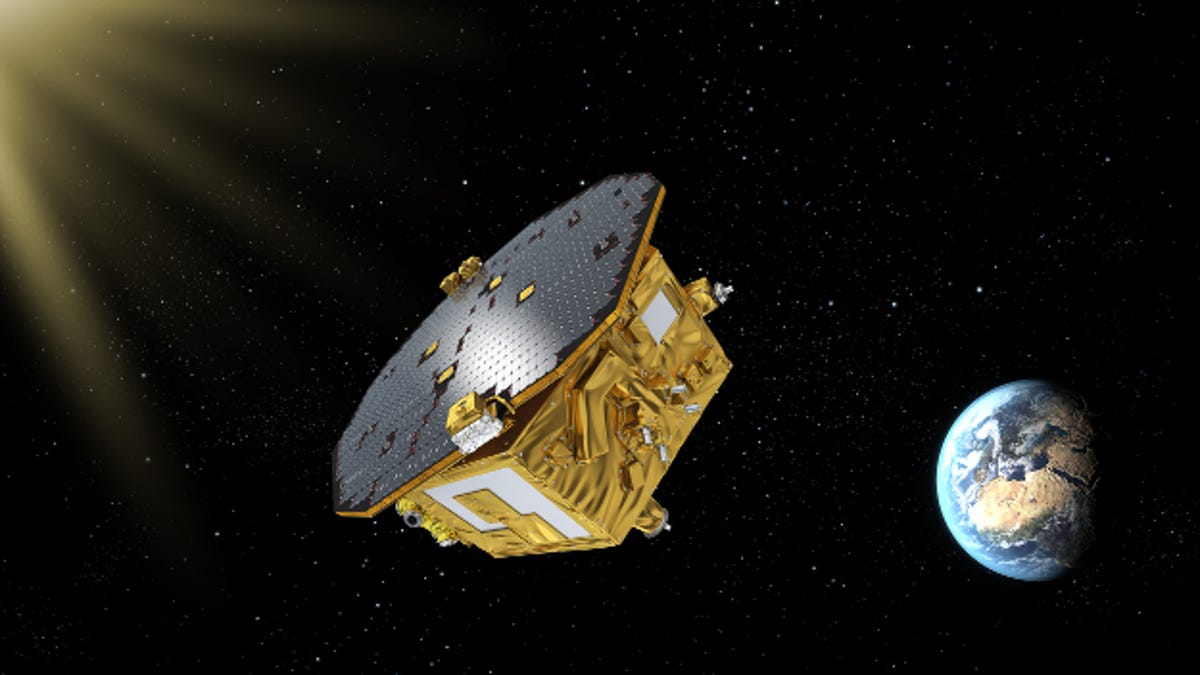Cutting-edge NASA thrusters fight back against sunlight
The just-launched LISA Pathfinder spacecraft has a new type of thruster on board to protect an experiment that requires "the purest free-fall ever produced in space."
In the vacuum of space, the sun can get a little pushy. The photons it sends out actually exert a force, albeit a mild one, on objects drifting around out there, like spaceships. In some cases, like the solar sail being developed by The Planetary Society, those photons can be used for propulsion. In others, even the small force exerted by the sun can present a problem, especially for instruments that need to stay undisturbed.
The LISA Pathfinder launched December 2 by the European Space Agency falls into the second category.
The goal of the Pathfinder mission is to test out technology that could ultimately help detect gravitational waves, ripples in space-time that were predicted by Einstein. If the instruments are effective, such technology could be included on future missions, perhaps even a space-based gravitational wave observatory.
Gravitational waves are incredibly faint and hard to detect. The technology the ESA is testing on this spacecraft involves two 4.6-centimeter (about 1.8-inch) cubes composed of a mix of gold and platinum, floating in vacuum chambers. Lasers will measure their position. The idea is to detect gravity waves by precisely measuring fluctuations in the distance between such objects. Because the craft can be jostled ever so slightly by solar radiation pressure, it needs a way to correct for that force. Enter NASA's Disturbance Reduction System.
This uses the very first set of colloid micronewton thrusters. Because I'm not a colloidal micronewton thruster expert, I'll let NASA take it from here.
"These thrusters electrically charge small liquid droplets and accelerate them through an electric field in order to generate thrust," said the space agency in a statement on Thursday. "Developed by Busek Co., Natick, Massachusetts, with technical support from JPL, the thrusters will deliver 5 to 30 micronewtons of thrust (about the weight of a mosquito) continuously, with exquisite precision, to counteract the force of sunlight."
In other words, as the sun pushes Pathfinder around, it can push back.
NASA says the thrusters will attempt to control Pathfinder's position to "within a millionth of a millimeter," while the lasers measure the cubes' position to "an accuracy of 100,000th of the width of a human hair." The cubes are 15 inches (38cm) apart, but if the system works, scientists envision a future observatory in which similar sensors would be housed on spacecraft separated by about 600,000 miles, or 1 million kilometers.
LISA (which stands for the earlier concept of Laser Interferometer Space Antenna) Pathfinder will take several weeks to reach its position, orbiting the Lagrangian Point L1, after which it will embark on months of technological demonstration and testing.
"Gravitational waves are the next frontier for astronomers," Alvaro Giménez Cañete, the ESA's director of Science and Robotic Exploration, said in a statement. "We have been looking at the universe in visible light for millennia and across the whole electromagnetic spectrum in just the past century. But by testing the predictions made by Einstein 100 years ago, with LISA Pathfinder, we are paving the road toward a fundamentally new window on the universe."


